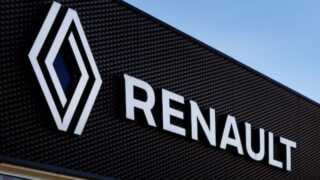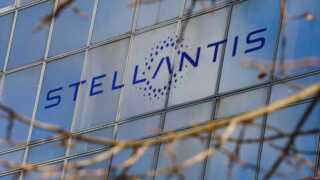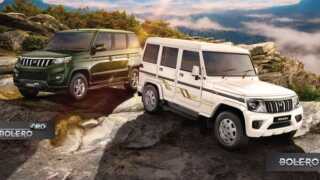Follow us today…
Whether it’s a track-day beater or the beloved old truck that’s gotten you through winters and cross-town moves, the cost of ownership has long been baked into the core of being a “car guy.”
Oil changes every 5,000 miles, $70 fill-ups, and enough trips to AutoZone to know the employees by name. Add in the mounting DoorDash bills after a Saturday under the car left you too greasy to cook, and you start to wonder if your pride might be nickel-and-diming you into the red.
But one man in the Tesla Model 3 and Model Y Owners Club on Facebook decided to flip that narrative on its head. Dillan Ellison and his story, equal parts financial recalibration and driving renaissance, offer a fresh lens through which to view the modern car-owning experience. His post, candid and passionate, reads like something scrawled in the margins of a road trip journal:
“I get super excited every time I think about the 2022 Tesla Model 3 that I bought a couple of weeks ago. I had a Ford F-150 with 120k miles on it that I bought about 5.5 years ago; it was getting 13 mpg and had a transmission that needed a rebuild, with a year of payments still left. I never traveled. I drove to and from work and wherever I needed to go. Anywhere I went that wasn’t work, the thought of fuel prices crossed my mind and stressed me out a bit.
Two weeks ago, I purchased the Tesla Model 3, and I really couldn’t be happier. My car payments are high, and my insurance went up about three times, and I still have no regrets. I’ve traveled from New Jersey to West Virginia and from New Jersey to Georgia all in the past two weeks, maybe a total of $250 in charging costs the entire time. No thought of maintenance issues whatsoever. No stress. Just get in and go. I always worried about running a dead battery on I-95 or getting stuck in the middle of nowhere. I have yet to stop on a road trip to charge and not have to take a leak anyway (I drink 2 gallons of water daily).
My mindset with this car is to RUN it. Beat on it. The warranty Tesla offers on the battery is honestly incredible and such a peace of mind. If you’re thinking about buying a Tesla or are on the fence about it, just do it. Do it and travel. Wake up on a Saturday and just go. All of the things you thought about doing one day, just do ’em. Go see your friend you haven’t seen in 8 years. Go to the hiking trail that you have been wanting to go to but haven’t because there are 4 that are much closer to your house. Do whatever it is that you can think about doing. You’re going to pay more in car insurance; get your money’s worth. I promise, you won’t regret it.
Edit because I know someone will think about it or mention it: I’ve read people say, “Teslas are just the new Honda Civic with all of the Chinese junk we put in them.” My thoughts? Tesla is exactly what the Honda Civic wanted to be, but never was. Fast (understatement). Sleek. And we don’t need to put a $500 cherry bomb on the rear muffler to make it sound like it’s fast. It’s a cool car. Have fun making it the way you like it.”
This Facebook testimonial ignited an impressive discussion, revealing an undercurrent of drivers who’d begun to view electric cars less as eco-focused appliances and more as genuine automotive liberators.
Member Tom Foil echoed these sentiments, recalling his own transition from a 2014 F-150:
“188k miles on it. The 4WD was going out. It was a money pit. 17mpg. Traded it in on a 2022 M3LR. Never looked back… Haven’t driven a gas vehicle since then. Have no desire to.”
It’s clear that this economic awakening isn’t merely isolated; it represents a larger reckoning among seasoned car owners who no longer accept the idea of relentless mechanical woes as simply part of the automotive bargain.
Tesla Supercharger Network Explained: 40,000+ Stalls, V2 & V3 Speeds, and NACS Expansion
- Tesla’s high-power Supercharger network includes over 40,000 stalls globally, operating with V2 and V3 (~250 kW) capable stations.
- V3 Superchargers can deliver up to 250 kW, allowing ~ 75–180 mi added in 15–20 minutes, depending on battery.
- Located along major highways and urban hubs, they’re integrated into navigation, with real-time stall availability shown to drivers.
- Thanks to the NACS connector rollout, access is expanding, now shared with GM EVs like the Equinox, increasing network density
Yet, the appeal isn’t solely about financial calculus; it’s about a newfound peace of mind. Consider Samantha Crowe, who shared,
“I had a ‘21 Kia and was dumping so much money in repairs, gas, and maintenance. This car has been nothing but a pleasure to drive, and I no longer have anxiety about whether my car is going to break down every time I drive it.”
Of course, the fear of range anxiety hasn’t vanished entirely, nor has the skepticism that comes naturally to enthusiasts raised on combustion engines.
Advertising
Diana Jacobs admits frankly,
“I’m still keeping my F-150 as I’m a homeowner, and there is no way I trust driving from VA to Illinois in a Tesla.”
Her practical hesitation is understandable, reflecting the cautious wisdom many car buyers still hold.
How Tesla Model 3 Owners Are Conquering Range Anxiety and Rediscovering Road‑Trip Freedom
However, even Jacobs’ concern might soften when faced with the overwhelming consensus of drivers discovering just how manageable, and downright pleasant, long-distance electric driving has become.
The Facebook narratives of Ellison and others offer another perspective entirely, one where the primary metric isn’t miles-per-gallon but miles-per-experience. Suddenly, weekend drives don’t require calculations about fuel stations and credit card limits.
Tesla Model 3 Charging & Range Specs: EPA Ratings, Home AC Charging, and 250 kW Supercharger Performance
- Offers EPA-rated ranges from around 220 mi (Std. Range RWD) up to 358 mi (Long Range AWD), depending on the trim
- AC charging at home supports up to 11.5 kW (on single-phase or three-phase setups); DC fast charging via Supercharger peaks at 250 kW, adding roughly 180 mi in 15 min
- Onboard charger efficiency: at 240 V/48 A can provide ~39–44 mi of range per hour; slower at 240 V/32 A, around 26–32 mi per hour
- Battery sizes vary (57.5–82 kWh), optimized for energy density; fast-charge capability depends on battery chemistry and state of charge
The numbers are compelling. Ellison’s East Coast road trips, historically a $500 gas-budget endeavor, were sliced neatly in half by his new electric steed. No fanfare, no fuss, just plug in, grab coffee, and press onward. This practicality upends the traditional assumption that gasoline-fueled cars inherently provide more freedom; on the contrary, it’s beginning to look like electric vehicles deliver driving liberty precisely because they remove many of the financial and mechanical anxieties we’ve grown used to.
A car is still a project, of sorts, but perhaps the project has changed. The new automotive challenge might not be about tuning carbs, timing belts, and midnight oil changes. As Ellison himself put it,
“All of the things you thought about doing one day, just do ’em.”
Maybe that’s the kind of automotive obsession we’ve all been waiting for.
Image Sources: Tesla Media Center
Noah Washington is an automotive journalist based in Atlanta, Georgia. He enjoys covering the latest news in the automotive industry and conducting reviews on the latest cars. He has been in the automotive industry since 15 years old and has been featured in prominent automotive news sites. You can reach him on X and LinkedIn for tips and to follow his automotive coverage.
Follow us today…
Source: torquenews.com










